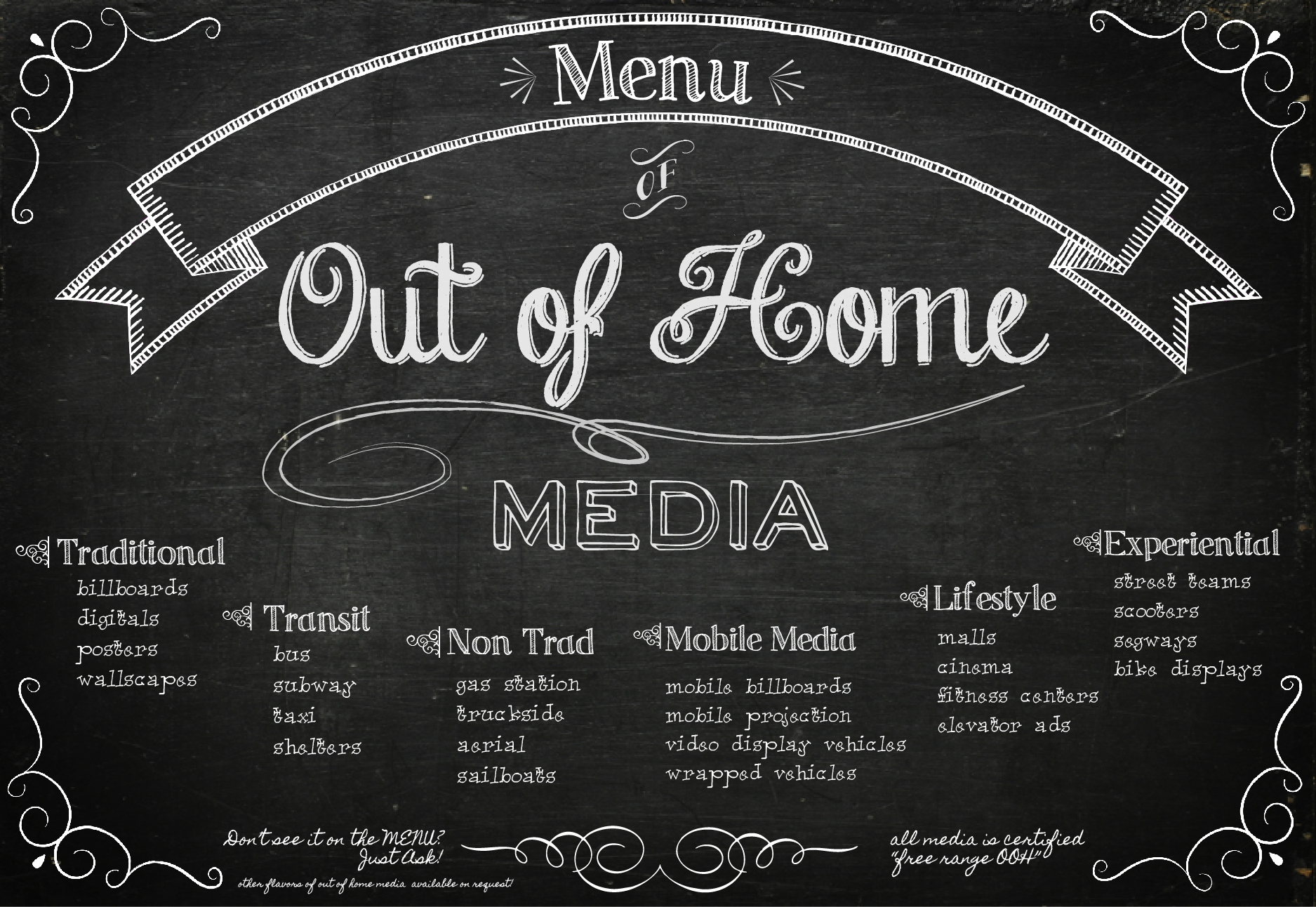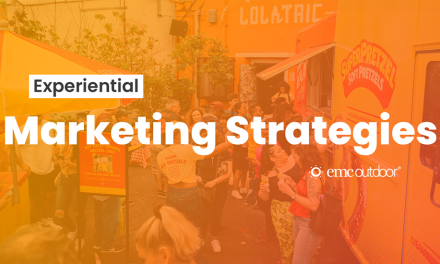As consumers pay more and more attention to environmental issues, marketers need to embrace sustainability with Out of Home media and make it central to their campaigns. Out of home (OOH) media is leading the transition to green advertising by embracing sustainability while delivering effective messages.
Making your campaigns greener doesn’t need to mean making dramatic changes. As the OOH advertising industry becomes more sustainable, keeping up with the transition is the best way to appeal to eco-conscious customers.
How the Industry Is Working to Embrace Sustainability with Out of Home Media
The Out of Home industry is working hard to make the media more sustainable on several fronts, from making the displays more eco-friendly to shifting to renewable energy sources and alternate materials. From upcycling old vinyl billboards to adding solar panels, there are plenty of ways to make your OOH displays more eco-friendly without compromising your messaging.
The efforts to move toward a more sustainable future are being embraced across the board by members of the OOH community. Media owners, printers, display manufacturers, and agencies are all embracing the challenge and making significant commitments to change.
Making Out of Home Media More Sustainable:
While gigantic sheets of vinyl may be associated with waste in many people’s minds, this doesn’t need to be the case. Recycling is the easiest and most accessible way to make billboard campaigns more sustainable. This can be accomplished from both ends of the production cycle, creating the ads up front and handling the copy once the campaign ends.
Print production companies like Circle Graphics produce fully recyclable billboards that use 60% less carbon than traditional materials. Many printers have shifted to alternate base materials that use less substrate and are significantly lighter, improving shipping and fuel efficiency.
On the back end of the campaign, creative recycling and reuse options can expand your campaigns and make them more sustainable. For example, partnering with companies like Rareform to turn old billboards into new products like tote bags, coolers, and pouches reduces waste and creates interesting new products for your customers. Recycled billboards can also be used for any resin-manufactured items.
Lighting for physical OOH media can be another sustainability concern. Lights that illuminate your ad space constantly can use a substantial amount of energy. Fortunately, there are multiple efficient lighting options. Switching out regular bulbs for LED lights can go a long way toward reducing energy usage. Adding solar panels to your existing OOH displays can power those ads and create additional clean energy.
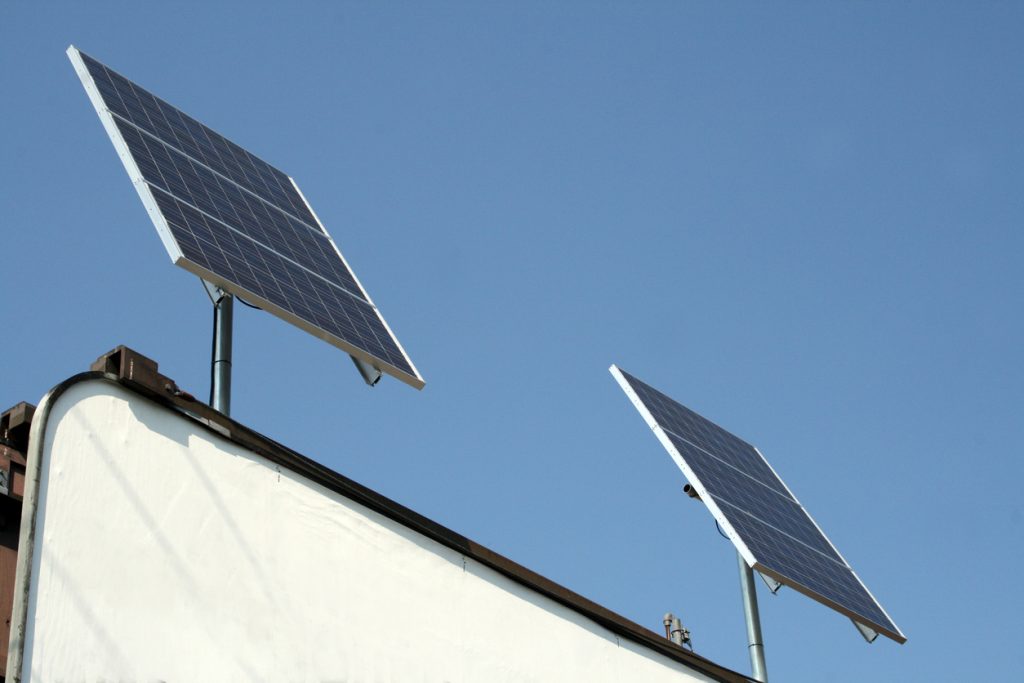
Out of Home Media That Directly Contributes to Sustainability:
Another area where OOH is embracing and contributing to a greener future is by creating media options directly tied to reducing environmental impact.
EV charging stations that double as advertising space are popping up nationwide. These displays provide a valuable service, making it more convenient and accessible for consumers to use an electric vehicle. Also, by drawing attention to the stations via the advertising space, they are raising awareness among consumers about EVs and making them more mainstream.
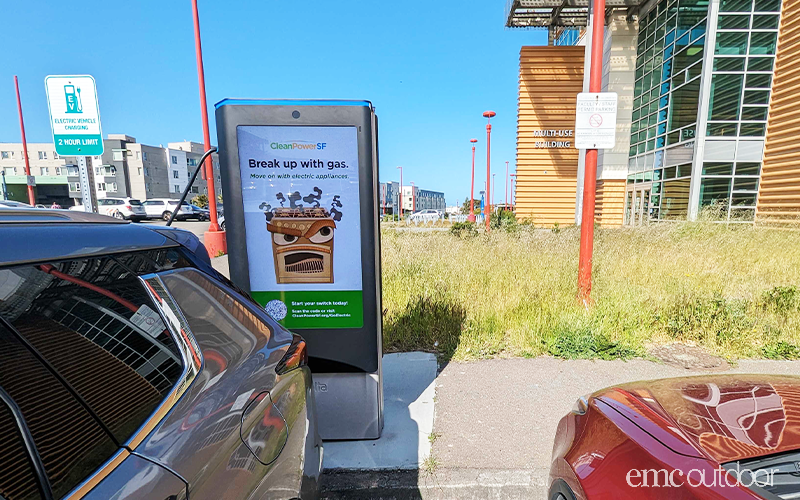
Other media options that support sustainability are things like bike-share racks. These are particularly popular in urban areas, providing easy, convenient, healthy, and eco-conscious transportation options for local citizens. The advertising space helps support the initiative while raising awareness of the availability of the service. And, of course bikes or any other human-powered mobile media can help contribute to sustainability with Out of Home media.
For brands, placing ads in these spaces highlights your brand’s commitment to the environment and makes your brand more visible to those already invested in a sustainable future.
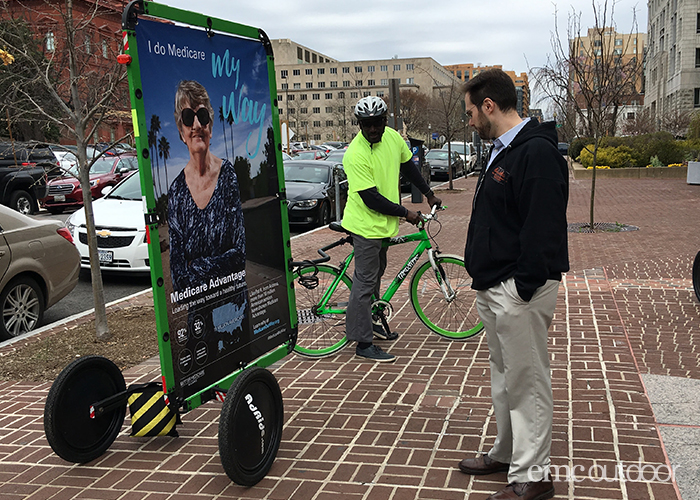
Digital Out of Home Helps Provide More Sustainable Media Options:
Digital OOH displays can make even more eco-friendly campaigns than physical ones. Since they don’t require creating a physical copy and disposing of it later, digital ads don’t produce the waste of a traditional OOH campaign. Most digital displays can be installed and updated remotely, which means fewer vehicles on the road.
Energy-saving tactics, like solar panels and efficient lighting, make digital billboards and signs even more sustainable. Finally, digital displays usually rotate through ads for around six to eight companies. Rotating displays create more space for ads without the environmental impact of building more billboards or other display spaces.
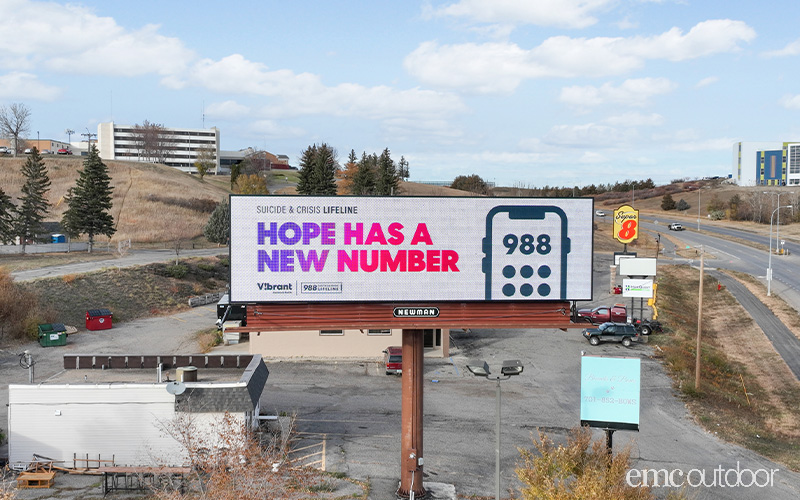
The Industry Commitment to Sustainability with Out of Home Media:
There is a great variety of media options and media owners across the Out of Home landscape. Among that community, some of the largest OOH media companies have committed to making green media choices. Their efforts provide excellent examples of what smaller companies should consider and how vital these shifts are within the market.
For example, JC Decaux and Clear Channel Outdoor have committed to carbon neutrality in advertising by 2050. JC Decaux is already using 100% renewable electricity, and Clear Channel Outdoor has added electric and hybrid vehicles to its maintenance fleet to reduce emissions.
Outfront Media is working on both recycling and reducing energy usage. By replacing 73,000 older fixtures with LED lights, the company is now using 76% less energy. It has also committed to sending 90% of its billboard vinyl to Rareform to be transformed into new products.
Lamar Outdoor is prioritizing solar power. By installing more than 7000 new solar panels, Lamar is contributing 1.7 megawatts of clean electricity to the grid in Louisiana and Florida and fully powering its billboards. These companies are setting a green industry standard and embracing sustainability with Out of Home media.
Sending a Brand Message with Out of Home:
Eco-friendly advertising isn’t just good for the planet. It’s also good business. Consumer eco-consciousness is driving purchasing decisions. Products that make claims surrounding environmental or social consciousness saw 28% growth over five years, compared to 20% growth for similar products that didn’t make these claims. Committing to making green advertising choices keeps your current customers happy and will continue to attract new customers who make the environment a priority as well.
In one survey, 78% of customers said a sustainable lifestyle is essential to them, so most of your customers are likely to care about sustainability. Positive environmental claims have been associated with better sales for both large and small brands, and customers tend to find multiple environmental claims more authentic.
This means offering both a sustainable product and sustainable advertising can especially appeal to your eco-conscious customers.
Embrace Sustainability in Your Next OOH Ad Campaign
Sustainable advertising is as good for business as it is for the planet. As major OOH media companies incorporate green choices into their long-term plans, smaller businesses need to make sustainable decisions to stay current with industry norms. Eco-friendly media will also appeal to a customer base that is growing more and more concerned about brand values.
Sustainability is the way forward in advertising. Green ad campaigns don’t have to mean abandoning physical media. The OOH advertising industry is leading the charge for more sustainable campaigns. From recycled vinyl to ads at EV charging stations, there are plenty of ways to tailor an eco-friendly OOH media campaign to your brand and customers. As major OOH media companies announce eco-friendly initiatives, embracing these campaigns only makes sense for any business that cares about the planet and customer values.
EMC Outdoor can help your company add sustainable features to your next Out of Home campaign. Contact us to discuss your ideas today!

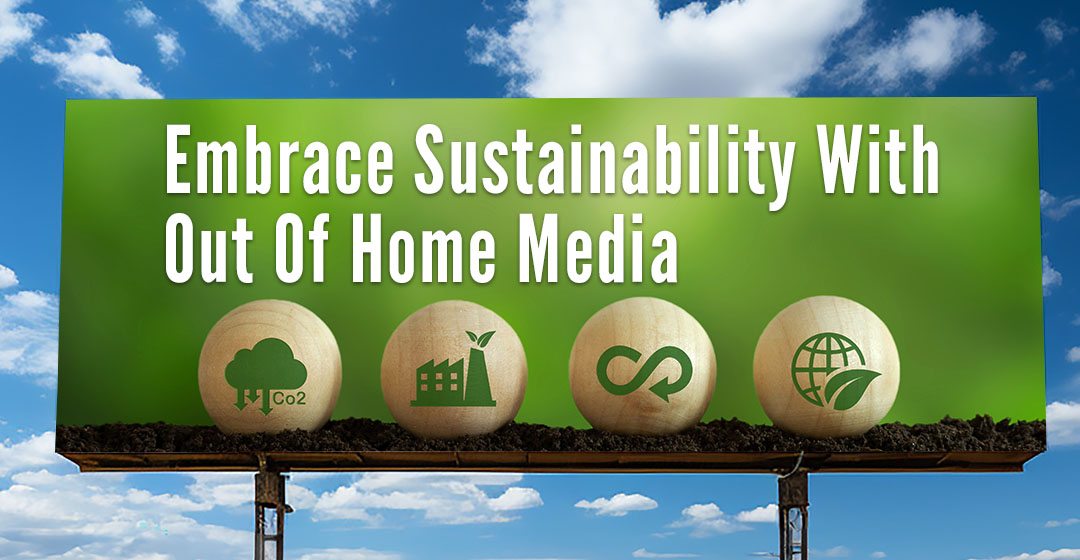

![Betsy McLarney Joins Geopath Board of Directors [Press Release]](https://www.emcoutdoor.com/blog/wp-content/uploads/2019/01/header3.jpg)
